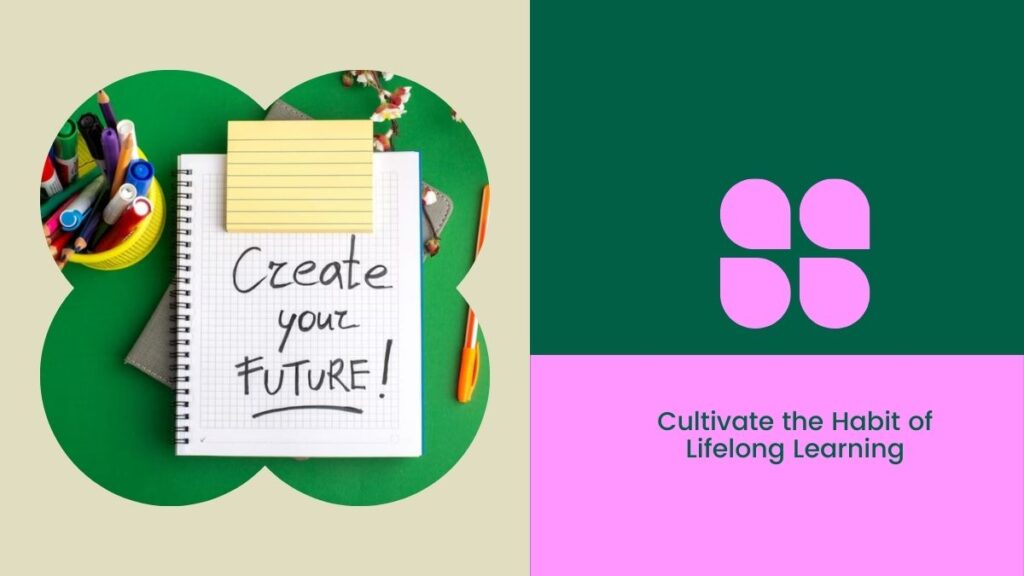College life is a roller-coaster ride of successes and setbacks. It’s not about avoiding the downs, but how you bounce back that shapes your personal growth.
Understanding Failure: More than Just a Setback
In the grand scheme of life, failures are not roadblocks but stepping stones, bringing you closer to success. This perspective is even more crucial for us college students in India, where the pressure to succeed is often immense.
Remember, handling failure effectively can be a game-changer. Why? Because failure doesn’t come alone; it brings along disappointment, depression, and negativity, which can be fatal to your motivation to move ahead. The key to maintaining your drive is understanding and managing these by-products of failure.
Here are some of the best ways to handle failure:
1. Embrace the Experience:
Don’t shy away from failure; embrace it. Understand that it is a part of life and an essential component of your personal growth. Every failure comes with valuable lessons that can help you improve and grow.
2. Analyze and Learn:
When you experience failure, take a step back, and objectively analyze what went wrong. Understand the factors that contributed to the failure and learn from them. This step is critical in turning failure into a stepping-stone for success.
3. Cultivate Resilience:
Resilience is the ability to bounce back from failure and adversity. Develop coping strategies that help you deal with disappointments and setbacks, and keep your focus on your ultimate goal. Remember, resilience is a skill that can be learned and improved over time.
4. Stay Motivated:
After a failure, it’s easy to lose motivation. To prevent this, remember why you started in the first place. Reconnect with your goals and dreams, and use that as fuel to keep going. Surround yourself with positive influences—people, books, or activities—that uplift and inspire you.
5. Use Failure as a Springboard:
Turn your failures into opportunities. Use them as a springboard to propel you toward your next venture. Failure often opens new doors and presents unexpected opportunities. So, dust yourself off, rise, and leverage your learned lessons to move forward with greater strength and determination.
The Power of Habits: Breaking the Mold

When faced with setbacks, most of us exhibit predictable reactions. But, this reaction isn’t instinctive or genetic. It’s an acquired behavior, a habit. Habits, though often hard to give up, play a pivotal role in our lives.
For college students, good academic habits and personal routines, even when they are out of their comfort zones, are keys to success. Constructive habits are also instrumental in personal success. Forming rituals can help you enhance your resilience and ability to bounce back.
Some of the best strategies to form constructive habits are:
1. Start Small:
The key to forming a new habit is to start with small, achievable goals. For instance, if you want to start exercising regularly, start with just a few minutes each day, then gradually increase your workout time. Small successes can motivate you to stick with your new habit.
2. Set Clear Goals:
Having a specific, measurable, achievable, relevant, and time-bound (SMART) goal can guide your habit formation process. Instead of saying, “I want to read more,” try setting a goal like, “I want to read one book per month.”
3. Consistency is Key:
Consistency is critical in habit formation. The more consistent you are, the stronger your habit will become. Choose a specific time each day to practice your new habit to help make it a part of your routine.
4. Use Triggers:
A trigger is a cue that initiates a particular habit. For example, your morning cup of coffee could be a trigger for reading a chapter of a book. Associating your new habit with a specific trigger can help embed it into your daily routine.
5. Use Positive Reinforcement:
Reward yourself each time you successfully practice your habit. This could be a small treat, a few minutes of relaxation, or anything else that feels like a reward. Positive reinforcement strengthens the habit loop and encourages the continuation of the habit.
6. Get Support:
Having a supportive network can help you maintain your new habit. Share your goals with friends or family and ask them for support. You could also join a group with similar goals to stay motivated.
7. Practice Mindfulness:
Being mindful of your actions can help you stick to your new habits. Pay attention to how you feel when you’re practising your habit, and acknowledge the positive impact it’s having on your life. This awareness can help you stay motivated and committed.
8. Be Patient:
Habit formation takes time, so don’t get discouraged if progress seems slow. It’s not about perfection, but persistence. Keep going, even when it’s hard, and remember that every step, no matter how small, is progress.
Creating Success Rituals: Building Your Bounce Back Ability

Successful individuals across the globe have one thing in common: they handle failure in their stride. How? By creating powerful rituals that help them keep things in perspective when they face a challenge.
They use habits as tools to overcome discomfort and depression, turning them into methods of progress. Emulating this, as college students, can result in a stronger commitment to your goals and the formation of essential “backup plans.”
Some good rituals for college students to help them overcome academic stress and procrastination are:
- Establish a Regular Sleep Schedule: Prioritize your sleep schedule to ensure you get a healthy amount of rest. Irregular sleeping habits can lead to fatigue and increased stress. Aim for 7-9 hours of sleep per night.
- Daily Planning: Begin each day by outlining the tasks that you need to complete. You can do this either the night before or in the morning. Visualizing your responsibilities can help you manage your time effectively and reduce procrastination.
- Time Management Techniques: Use techniques like the Pomodoro Technique (25 minutes of focused work followed by a 5-minute break) to make tasks seem less daunting and improve focus.
- Regular Exercise: Incorporating regular exercise into your routine can help manage stress levels. Whether it’s a quick 15-minute walk around campus or an hour-long workout at the gym, exercise releases endorphins that can help improve your mood and clear your mind.
- Healthy Eating Habits: Establish a regular eating schedule that includes balanced meals. Poor nutrition can increase stress levels and affect your ability to concentrate.
- Study Groups: Participate in or form study groups. These groups can offer support, share ideas, and make studying less overwhelming.
- Breaks and Leisure Time: Schedule time for breaks and leisure activities. This can involve anything from hanging out with friends to reading a book or practising a hobby. It’s important to balance academic responsibilities with downtime.
- Use a Planner or Digital Tools: Keep track of assignments, due dates, and other academic obligations in a planner or using digital tools like Google Calendar or Asana. This will help you stay organized and reduce the anxiety of forgetting important tasks.
Remember, these rituals can take time to establish, and it’s okay if your schedule or routine isn’t perfect. The goal is to gradually create habits that support your academic success and mental health.
Beyond the Status Quo: The Habit of Lifelong Learning

If your habit helps you break from the status quo, propelling you into a zone of high achievement, it can be beneficial. While physical records may stop at some point, the habitual development of new mental areas can help you continue to break barriers for a lifetime.
Some practical tips on how to develop the habit of lifelong learning are:
- Cultivate Curiosity: Be curious about the world around you. Ask questions, explore new ideas, and be open to different perspectives. Curiosity fuels the desire to learn and grow. Make it a habit to learn something new every day, even if it’s a small fact, a word in a new language, or a concept you hadn’t understood before.
- Establish Clear Learning Goals: Just as with any habit, setting clear, measurable, and achievable goals can help. Whether it’s reading a certain number of books each year, mastering a new skill, or learning a new language, having concrete objectives can guide your learning journey.
- Prioritize Time for Learning: Set aside dedicated time each day for learning, just as you would for any other important activity. This could be 20 minutes each morning to read, a weekly class or workshop, or time spent on a course or podcast during your commute. Consistency is key.
- Use a Variety of Learning Resources: Lifelong learning doesn’t have to mean traditional classroom education. Use the wide variety of resources available to you, such as online courses, books, documentaries, podcasts, or even travel and cultural experiences. Each offers different perspectives and opportunities to learn.
- Embrace Mistakes as Learning Opportunities: Part of lifelong learning is understanding that mistakes are not failures, but opportunities to learn. When you make a mistake, reflect on what went wrong, why it happened, and how you can avoid making the same mistake in the future. This growth mindset can help you approach challenges with resilience and keep you engaged in the learning process.
Learning from the Legends: Edison, Lincoln, and Bachchan
Take a page from the books of some of the most successful individuals in history.
Thomas Edison’s Spark of Perseverance

In the late 19th century, Thomas Edison, the famed inventor and innovator, was working
diligently to create a practical, long-lasting electric light bulb. It was a project that held massive potential but was also fraught with myriad challenges.
The quest for a suitable filament — a material that would glow brightly without quickly burning out — proved particularly daunting. Edison tried a vast number of materials, ranging from various plants to hairs from a friend’s beard!
After months of experiments, the count of failed attempts reached a staggering 10,000. The local press caught wind of this seemingly insurmountable number and approached Edison. A young journalist, aiming to score a sensational story about the ‘great inventor’s great failure,’ asked Edison, “Mr Edison, how does it feel to have failed 10,000 times?”
Edison, with his unwavering spirit undimmed, looked at the young journalist and responded with a grin, “Son, I have not failed 9,000 times. I’ve merely discovered 10,000 ways how not to create a light bulb.”
From Edison’s perspective, each failed experiment was not a dead end but a stepping stone. Each “failure” brought him one step closer to his goal. His enduring resilience and innovative mindset paid off when he finally found a suitable filament material in carbonized bamboo, leading to the invention of the practical electric light bulb we know today.
This tale of Edison’s persistent approach to failure holds a powerful lesson: it is not the number of times we stumble that counts, but the number of times we rise, dust ourselves off, and press forward with renewed vigor. Like Edison, in the face of failure, we must learn, adapt, and continue to strive towards our goals.
Abraham Lincoln’s Resilience Through Rejection

Abraham Lincoln, the 16th President of the United States and a prominent figure in American history, was no stranger to the bitter taste of failure. In fact, Lincoln’s journey to the presidency was marked by a series of defeats and disappointments that would have driven many people to abandon their ambitions. Yet, Lincoln was not one to be easily dissuaded.
One notable instance took place in 1854. Lincoln had set his sights on a U.S. Senate seat in Illinois. However, despite his impassioned campaigning and tireless efforts, Lincoln was defeated. He was deeply disheartened, but his spirit remained undeterred. Lincoln once said, “My great concern is not whether you have failed, but whether you are content with your failure.”
Another crushing defeat came in 1856 when he sought the vice-presidential nomination at his party’s national convention. He was thoroughly defeated in that effort, but still, Lincoln refused to let the defeat define him. Instead, he sought to learn from these experiences, grow from his losses, and continue forward on his political journey.
The crowning setback, however, came in 1858 when Lincoln squared off against Stephen Douglas in a historic campaign for another U.S. Senate seat. Despite gaining a national reputation from the famous Lincoln-Douglas debates, Lincoln lost the election. But rather than wallowing in despair, Lincoln took a moment to lick his wounds and then continued his political career with an even more ambitious aim – the Presidency.
Only two years later, in 1860, Abraham Lincoln was elected President of the United States, leading the nation through one of its greatest crises – the Civil War. His resilience in the face of defeat was monumental in shaping not only his destiny but that of an entire nation.
Lincoln’s journey is a testament to his famous quote, “Success is not final, failure is not fatal: It is the courage to continue that counts.” Even through his struggles and failures, Lincoln’s tenacity and determination saw him through, reminding us that setbacks are just setups for greater comebacks.
Amitabh Bachchan: A Symphony of Perseverance

Considered the Shahenshah (Emperor) of Bollywood, Amitabh Bachchan’s journey to stardom was far from straightforward. His early life was fraught with failure and rejection that could have easily snuffed out his dreams.
Bachchan’s first encounter with failure occurred when he applied to work as a newsreader for All India Radio. His deep, baritone voice, which later became one of his most iconic traits, was ironically deemed unsuitable for radio. But this rejection did not deter him, and Bachchan decided to try his luck in the Indian film industry instead.
His entrance into Bollywood was not smooth sailing. His first few movies were box office failures, and the industry was ready to write him off. Bachchan, however, had other plans. Instead of accepting defeat, he used these failures as stepping stones, using each setback as an opportunity to refine his craft and perfect his performance.
Despite his early struggles, Bachchan’s breakthrough finally came in 1973 with the film “Zanjeer,” where he introduced the “angry young man” persona to Indian cinema. This role catapulted him to fame and solidified his place as one of Bollywood’s leading men.
However, the trials in his life were far from over. In the late 90s, Bachchan faced another setback when his company, Amitabh Bachchan Corporation Ltd. (ABCL), went bankrupt. But displaying the same tenacity that carried him through his earlier struggles, Bachchan picked himself up and staged a successful comeback with the popular television game show “Kaun Banega Crorepati” (Who Wants To Be A Millionaire).
Amitabh Bachchan’s journey is an inspiring anecdote of resilience and determination. His unwavering dedication to his craft and his ability to rise above failures make his story an exemplary model for everyone trying to make their mark in their chosen fields. His story serves as a potent reminder that success is not about never failing but about getting back up every time you do.
So, as you navigate through college, remember to embrace failures, form beneficial habits, and stay motivated. It’s these components that will contribute significantly to your personal growth and help you ride the wave to success.





